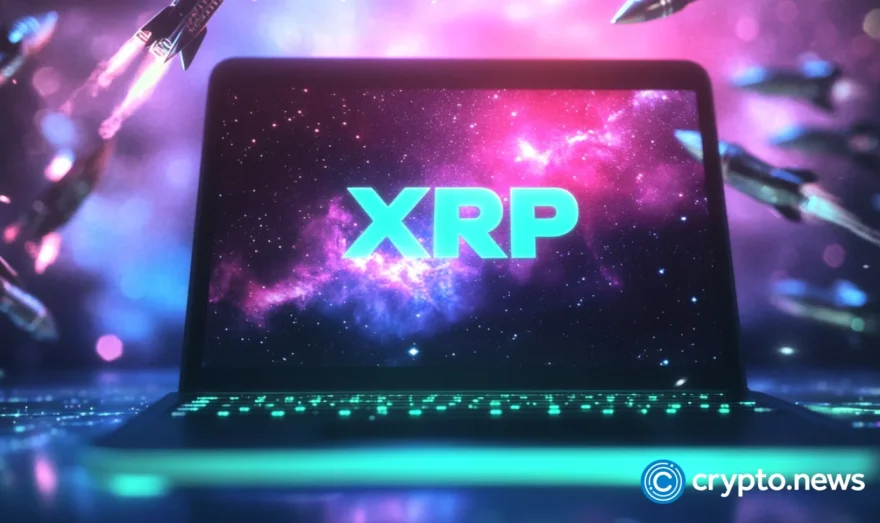Bridging Traditional Finance And Cryptocurrency: What Does The Future Look Like?

In today’s world, as decentralized finance continues to emerge alongside traditional financial models, it makes sense to ask: what’s in the crystal ball? How are these two very different modes of finance going to coexist?
First of all, let’s look at some particular tensions on the market right now.
Cryptocurrency, which has been widely hailed as a ‘safe haven’ from Federal Reserve impacts, seems to be responding to interest rate fears with a sell-off that is correlating with equities and traditional assets, to some extent.
“What makes (recent crypto downturns) different from the previous ones is a perceived closer relationship between digital assets and traditional markets,” writes an analyst in a blog post at AAX Academy. “This time, the sell-off may have far more to do with traditional macro-economic factors such as inflation, planned interest rate hikes projected for later in the year, and a coinciding sell-off in the traditional stock market. But wasn’t the crypto market supposed to act as a hedge against inflation, central bank policies, and the rot of fiat currencies eating away at the global economy and household wealth?”
Part of crypto’s past track record is in institutional investment. If even institutional investment isn’t enough to untether Bitcoin and other coins from traditional finance volatility patterns, what’s next?
First of all, since crypto activity has been uncorrelated to dollar moves in the past, it’s worth asking whether this current selloff happens to be a coincidence. But beyond that, hodlers are standing strong based on some particular market ideas.
New Markets
Also, as AAX points out, crypto has been “maturing in terms of its utility,” the author writing:
“The whole (DeFi) market represents a broader investment thesis into technology – similar to tech stocks as a segment of the equity market. Instead of the gold-like store of value play of Bitcoin, investing in Layer 1 tokens such as ETH, SOL, BNB, LUNA, FTM, and AVAX is a technology bet on the wider digital asset ecosystem and its innovative applications. Many institutional investors are increasing their exposure to digital assets, and after BTC, the next logical stop is mostly Ethereum (ETH), followed by the rest of the Layer 1 alternatives.”
In other words, all sorts of new lending and insurance innovations utilize trustless and permissionless transaction methodologies based on the blockchain and transparent DeFi assets that challenge what was possible with fiat.
Then there is the metaverse – something that’s just beginning to gain currency in our world. In a future system where metaverse environments accommodate business and social life, where avatars mingle in ethereal digital halls, crypto and the blockchain are almost sure to get new market value.
Right now, there’s really not much connecting the average small investor to the crypto world at all. In fact, there’s sort of a disconnect between the major advantages of crypto lending and other services, and people’s perceptions of cryptocurrency, where a lot of people would rather not spend the time and energy to get involved.
It only takes a few major metaverse services to change how we feel, and usher in a new wave of positive blockchain sentiment that could form a tsunami.
Stablecoins and Other On-Ramps
Here’s one innovation that’s been instrumental in helping to explain the use of cryptocurrency in a volatile context.
Stablecoins are DeFi and crypto assets that are made to be pegged to fiat currencies like the dollar. Different institutions have created their own stablecoins – for example, J.P. Morgan’s JPM Coin represents a major traditional American bank jumping on the crypto bandwagon, so to speak.
Aside from stablecoins, there are other kinds of systems built to help investors to switch between fiat and cryptocurrencies, and some of these may become valuable in the years to come.
Lending and Verified Credentials
In the crypto lending world, some experts are suggesting that by bringing new credit information into the blockchain, borrowers will be able to more easily do things like take out a mortgage, or finance a vehicle.
All of this, again, points to a future of utility that suggests cryptocurrency is going to be a lot more a part of our lives than it is now.
There is a consensus that we have to reach a point where cryptocurrency is actually vital to something in a person’s everyday life – and then, suddenly, the whole thing will take off in a big way.
Bridging Crypto and Traditional Banks
Contrary to what some might think, it shouldn’t be that difficult for traditional financial institutions to survive in a crypto boom.
One scenario is that they simply pivot to a new range of services.
Although crypto doesn’t require traditional bank verification, it’s not labor-free. There are all sorts of ways to create boutique services for crypto hodlers and diamond hands ETH fans, and all of these other characters who are likely to emerge victorious from a crypto revolution because they bought in early. (For example, there are scores and scores of Bitcoin-made millionaires walking around who bought the coin before its spiral into the heavens at all-time highs of $60,000. Of course, those who bought at the highs are now down about 33%.) But banks, seeing more people become involved, can trade on that if they want to remain relevant.
The bottom line is there’s more to cryptocurrency than just volatility. It’s likely to become a big part of the financial mechanisms that we use as we go into the next generation.














